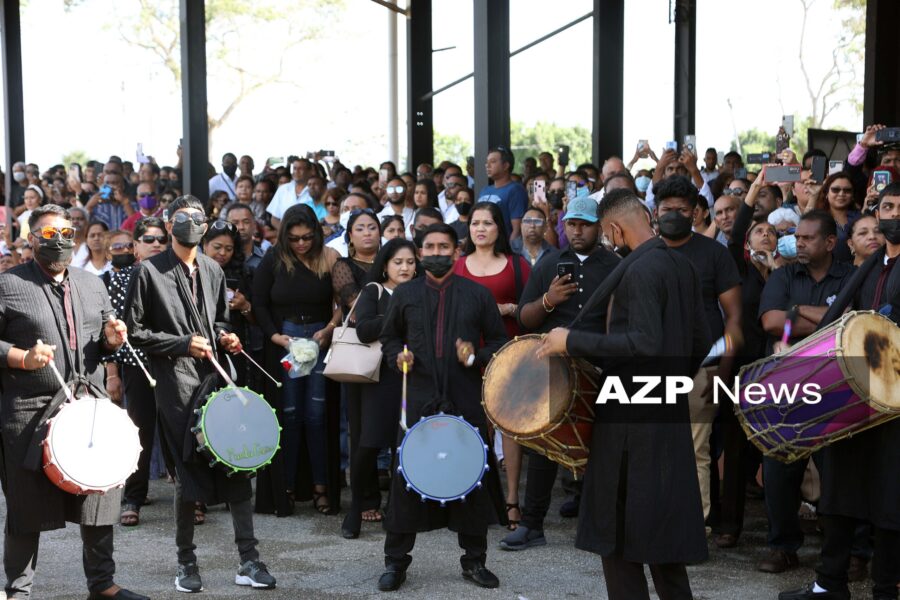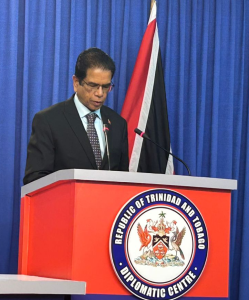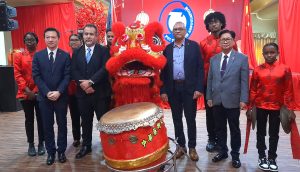File photo: Tassa music at the funeral of the late prime minister Basdeo Panday in January. AZP News/Azlan Mohammed
Send Letters to the Editor: letters@azpnews.com or news@azpnews.com
Dear Editor,
For Keith Rowley and the PNM, the main argument for excluding tassa from our national identity and maintaining its status as an East Indian instrument comes down to the fact that the drums did not originate in Trinidad and Tobago, but were brought to our shores by the indentured labourers.
This is true, to the extent that the drums did exist in India prior to the migration of thousands of workers under indentureship. It can be argued, however, that the brand of tassa music that formed the backbone of chutney music, is indigenous to T&T, and took on an identity that is very much unique to our country.
No longer were these drums strictly bound to religious and cultural ceremonies, but were now used in a form of mainstream musical entertainment that spoke to all Trinis regardless of ethnicity or religious background. It is for this reason that so many people in this country today believe that this form of tassa is in fact indigenous to Trinidad and Tobago and ought to be recognised in the same vein as the steelpan, and in my opinion, at least, they make a valid point.
But putting that aside for a second, if we were to consider the situation in the same way that the prime minister is doing, then, we must ask ourselves, were there no other musical instruments created in the past few centuries that derive their origin from our shores? The answer is of course yes… yes there was. But it’s the fact that no one seems to know this that is truly the bigger issue here. It is a failing of our educational system that so many people reading this right now may find themselves struggling to think about which other musical instrument might have been created locally, but who are not able to find the answer.
Moreover, the fact that those same people are also acutely aware of the existence of this instrument, and may even enjoy it to some degree, makes it even more devastating that this thing does not have meaning in our history and culture.
What is this instrument you might ask? Well, dear reader, it is none other than the noble dhantal, created by East Indian indentured labourers after they arrived in Trinidad and Tobago in the mid-1800s. In fact, this instrument has a lot of similarities to the steelpan in both origin and usage to the point where you might wonder if one didn’t influence the other. You see, just as the steelpan was inspired by the talking drums of Africa, with the material of the instrument being changed from wood to metal, the same transformation occurred with the dhantal after the original wood version made its way across the Atlantic.

The modern dhantal as created by these indentured workers was fashioned from steel rods that were used yolk oxen together when hitched to carts, while a metal horseshoe was used to strike the rod to make the melodious sounds. This eventually became refined into the design known today and is a staple of Indo-Trinbagonian music and culture to this day, and unfortunately, that may be the reason that it is not held in any high regard by the current administration.
Send Letters to the Editor: letters@azpnews.com or news@azpnews.com
While some might argue that neither the tassa nor the dhantal has as broad appeal as the steelpan, I have to ask when has that ever been an issue for something to be included on the Coat of Arms?
The inclusion of one of these instruments together with the steelpan is not dissimilar to another pair of images that appears prominently on the current version of our national crest.
You see, as magnificent as they may be, the Cocrico holds no sentimental value to the residents of Trinidad, in the same way that those in Tobago may not recognise the Scarlet Ibis as part of their identity. However, the inclusion of both is a reflection of the unity and harmony between the residents of both islands. For this reason, the inclusion of a musical instrument of Indo-Trinbagonian heritage would be a welcome addition to a Coat of Arms meant to reflect our multicultural society, especially as these national symbols have historically excluded certain cultures from the iconography of our country, which in turn, makes those groups feel excluded as a result.
Ravi Balgobin Maharaj
Via email
Send Letters to the Editor: letters@azpnews.com or news@azpnews.com
![]()













